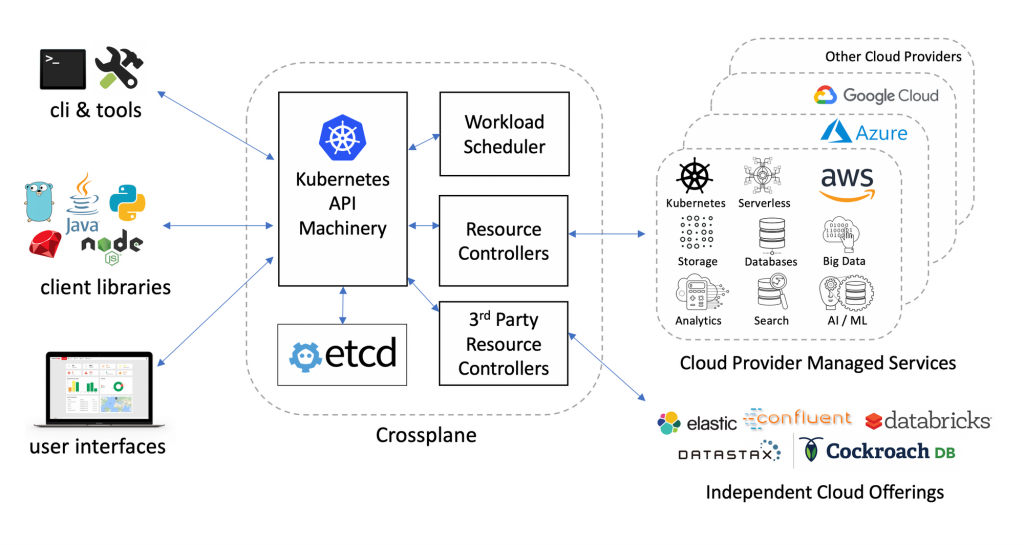Upbound Extends Reach of Kubernetes Control Plane
Upbound, at the KubeCon + CloudNativeCon + Open Source Summit China 2019 conference, announced it has extended the open source Crossplane control plane that it developed to run natively on Kubernetes to support cloud services that are external to the Crossplane source repository.
Phil Prasek, principal product manager for Upbound, notes Kubernetes is clearly a key enabling technology that will foster the emergence of hybrid cloud computing. The Crossplane extension means the open source community can add new functionality that is released and versioned independently from Crossplane, he says.
Crossplane provides the mechanism that enables developers to model complicated applications as a single unit that will be orchestrated and deployed to the cloud or cluster of their choice via a single scheduler. Among the early adopters of Crossplane is GitLab, which is employing Crossplane on top of Kubernetes to enable organizations to deploy the company’s namesake continuous integration/continuous deployment (CI/CD) platform across a hybrid cloud computing environment anchored around Kubernetes.
 Prasek says the Crossplane team is making a focused effort to define, document and implement the patterns and best practices for building controllers to deploy services and applications across multiple clouds—an activity that Unbound is hoping will encourage the rest of the open source Crossplane community to develop additional controllers.
Prasek says the Crossplane team is making a focused effort to define, document and implement the patterns and best practices for building controllers to deploy services and applications across multiple clouds—an activity that Unbound is hoping will encourage the rest of the open source Crossplane community to develop additional controllers.
In many ways, the relationship between Kubernetes and Crossplane is symbiotic. One of the reasons so many enterprise IT organizations are so interested in Kubernetes is that it enables a hybrid cloud computing strategy that prevents them from becoming locked into any one cloud service provider. At the same time, however, prior to the arrival of Crossplane, there was no common mechanism for deploying distributed applications across multiple clouds. The only way to achieve that goal without a common control plane was to stitch all the pipelines an application might require by hand, Prasek says, adding as Crossplane continues to mature, the existence of a control plane for hybrid clouds is likely to also spur increased adoption of Kubernetes.
Crossplane is installed using the same Helm tools as Kubernetes, which Prasek says makes it much easier to rely on the service to knit different services together than, for example, relying on an instance of the Open Source Broker (OSB) to tie those services together at the application programming interface (API) level.
While there is clearly a massive amount of interest in hybrid cloud computing, no clear consensus has emerged regarding the best way to achieve that goal. Whatever the path taken from here, cloud services increasingly will become easier to rip and replace as organizations leverage Crossplane controllers. Most cloud services today feature open APIs, but those APIs are usually tied to a raft of proprietary services that become difficult to disengage once an organization becomes dependent on them.
Hopefully, one day soon, control over cloud computing will be returned to the enterprise IT organizations that actually pay for the privilege of using those services as they best see fit.




